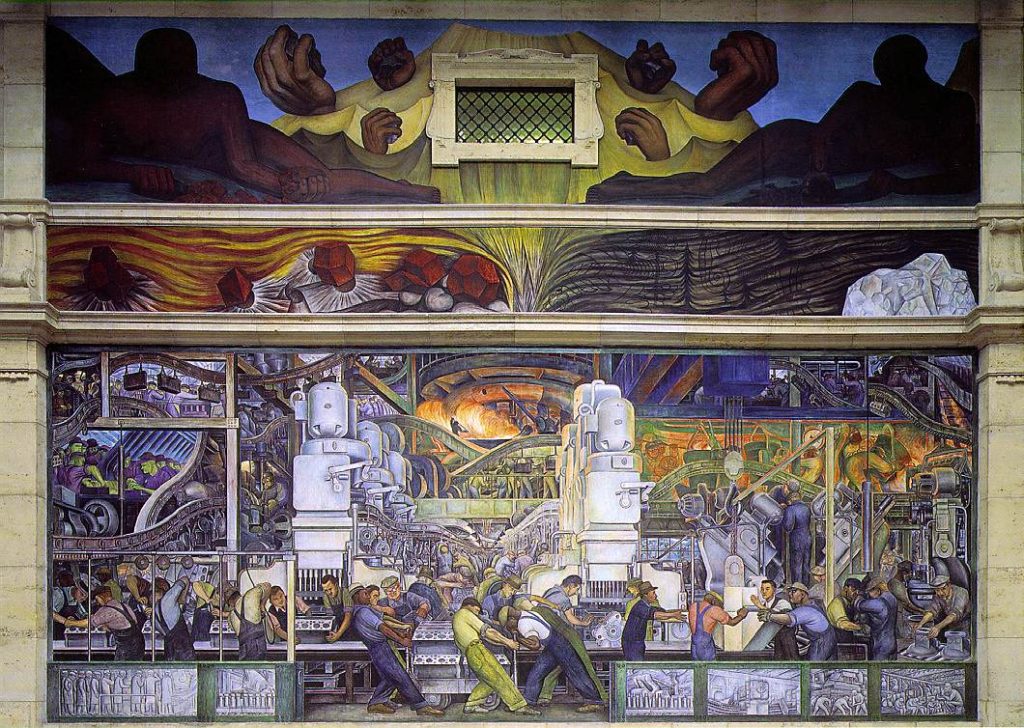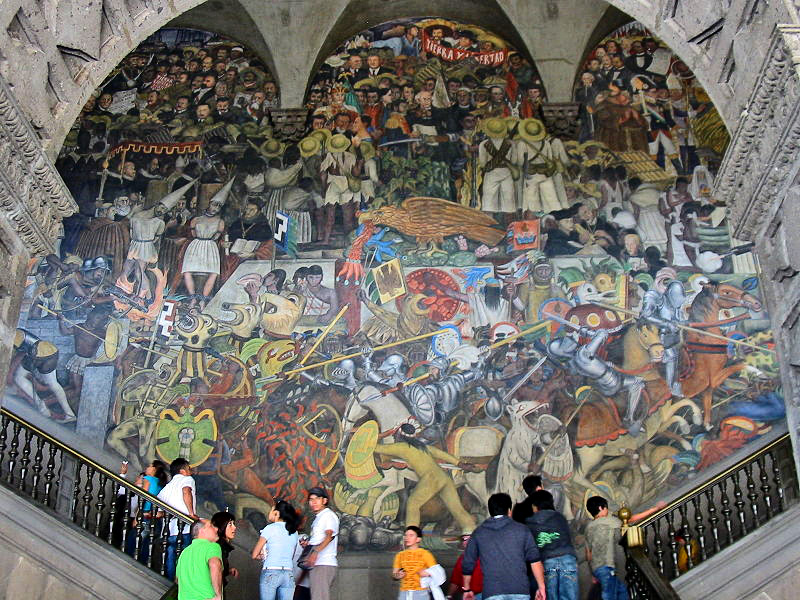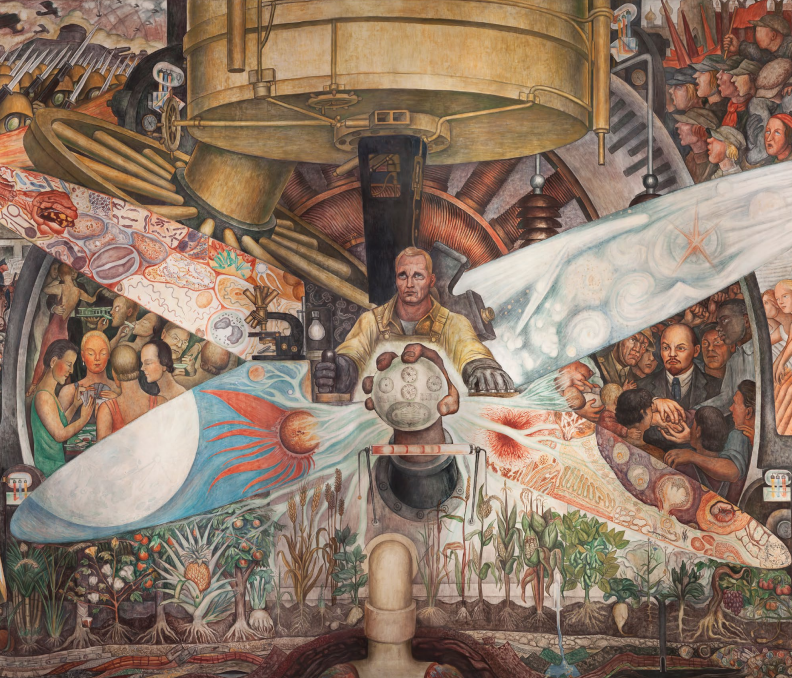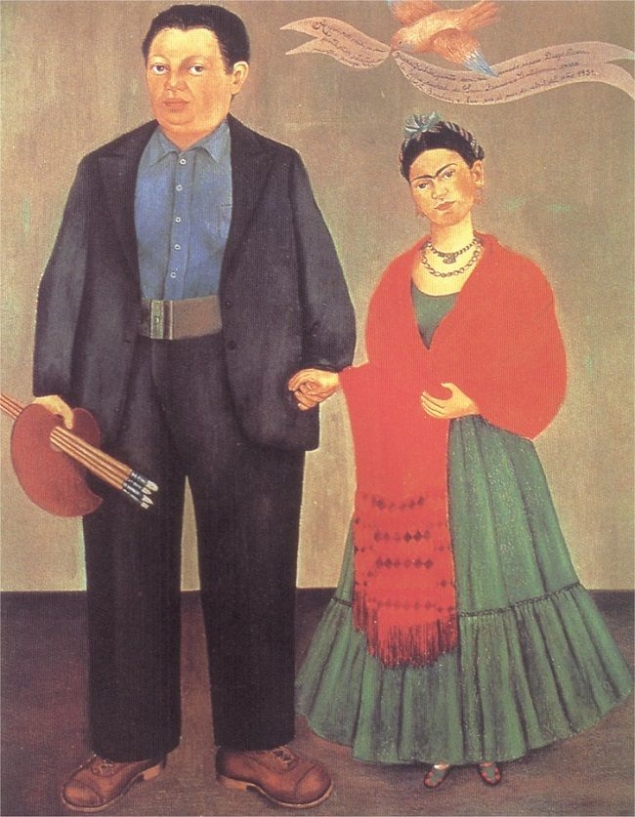Diego Rivera is one of the most renowned Mexican artists of the 20th century, known for his bold and powerful murals. His work is recognised worldwide for its social and political commentary and celebration of Mexican culture and history.
Diego Rivera was born in Guanajuato, Mexico, in 1886. He began his artistic career at a young age, studying at the Academy of San Carlos in Mexico City and later travelling to Europe to study under some of the most influential artists of the time. Rivera’s style was heavily influenced by the Mexican Muralist movement, which sought to create art accessible to the public and reflected the struggles and triumphs of the Mexican people. Rivera’s murals can be found in various locations around the world, including the National Preparatory School in Mexico City, the Detroit Institute of Arts, and the Palace of Fine Arts in Mexico City.
Detroit Industry Murals
One of his most famous works is the “Detroit Industry Murals,” a series of frescoes that cover the walls of the Detroit Institute of Arts. Diego Rivera painted the murals in 1932 in Detroit which was hit hard by the Great Depression. The murals depict the manufacturing process of the Ford Motor Company’s vehicles. Rivera used the east/west/north/south axis of the space to symbolically represent the sunrise, beginnings, and new life. The murals also show workers and the constructive and destructive uses of technology. Rivera’s use of bold colours and dynamic figures creates a sense of movement and energy that captures the spirit of the city. The murals were controversial upon their public unveiling, with many people calling for their destruction or preservation. Ultimately, Edsel Ford accepted them into the museum collection.

View toward the south-east (detail), Diego Rivera, Detroit Industry murals, 1932-33, twenty-seven fresco panels at the Detroit Institute of Arts Image copyright Detroit Institute of Arts
History of Mexico
Another notable work by Rivera is the “History of Mexico” mural, which can be found in the National Palace in Mexico City. The mural covers over 4,000 square feet and tells the story of Mexico’s history from the pre-Columbian era to the Mexican Revolution. The mural is divided into three sections, each with its own theme and style. The first section features pre-Columbian civilizations, the second section depicts the Spanish conquest and colonisation, and the third section shows the struggles and triumphs of the Mexican Revolution. Rivera’s use of symbolism and allegory creates a powerful narrative that celebrates the culture and heritage of Mexico. Rivera’s murals also address social and political issues, such as the exploitation of workers and the struggle for social justice.

Image Copyright Thelmadatter
Man Controller of the Universe
“Man at the Crossroads” mural, commissioned for the Rockefeller Center in New York City, was controversial for depicting communist leader Vladimir Lenin, which angered Rockefeller. The mural was eventually destroyed, but Rivera recreated it in Mexico City “Man Controller of the Universe“, where it remains on display at the Palacio de Bellas Artes. The recreated mural in Mexico City depicts a world in the midst of politically turbulent times and is a powerful statement on the struggle of the working class against the ruling elite. Rivera highlights the differences between the positive and negative aspects of humanity and also showcases the differences between capitalist and communist societies.

Image Copyright Museo Palacio de Bellas Artes
Diego Rivera was married, divorced and then remarried to another renowned Mexican artist, Frida Kahlo. Their marriage was famously tumultuous, marked by infidelities and artistic rivalry, but also a deep creative connection. Kahlo and Rivera influenced each other’s work, and their art often depicted their personal struggles and pain.

Frida and Diego Rivera by Frida Kahlo, 1931. Image Copyright fridakahlo.org
Diego Rivera’s murals are a testament to the power of art to inspire and educate. His work celebrates the culture and heritage of Mexico while also addressing social and political issues that are still relevant today. Rivera’s legacy continues to inspire artists around the world, reminding us of the importance of art as a means of expression and social commentary.